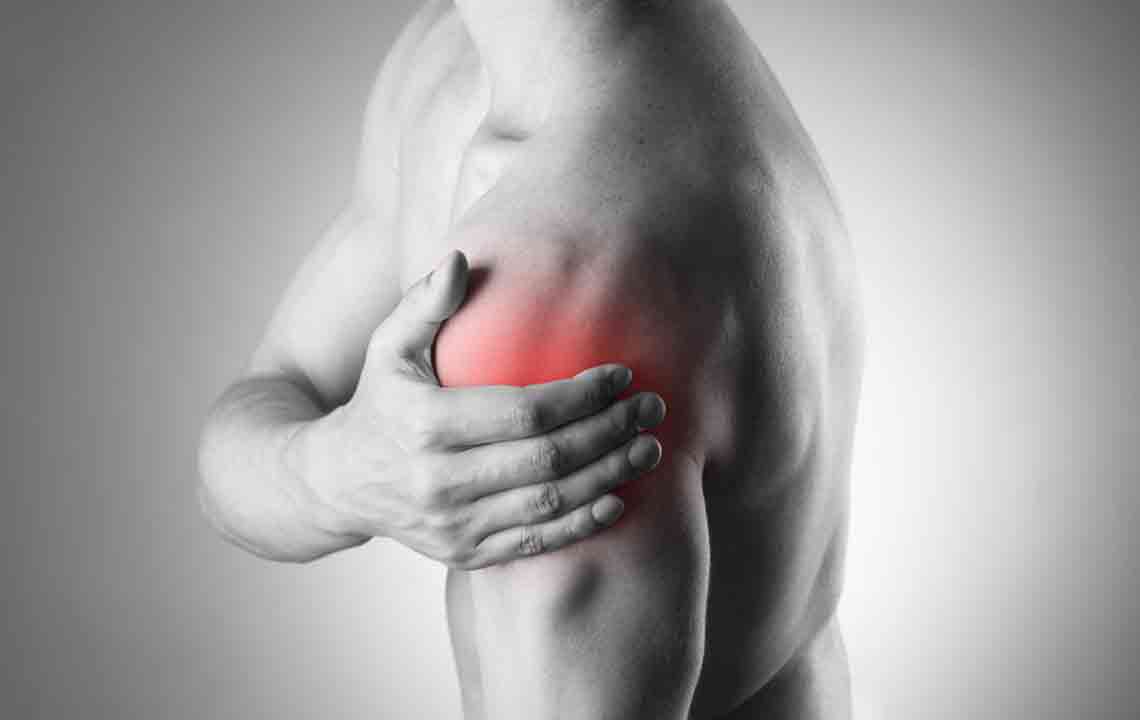Comprehensive Guide to Shoulder Pain: Causes, Symptoms, and Effective Treatment Options
This comprehensive guide explores the common causes of shoulder pain, signs indicating when to seek medical help, and effective treatment strategies. It covers everything from minor overuse injuries to serious conditions requiring surgery, emphasizing the importance of early diagnosis and personalized care for optimal recovery. Learn how to manage shoulder discomfort through conservative methods like physical therapy, medication, and lifestyle adjustments, and discover when surgical options may be necessary for long-term relief.

Comprehensive Guide to Shoulder Pain: Causes, Symptoms, and Effective Treatment Options
Shoulder pain is a common issue that affects millions of people worldwide, impacting daily activities and overall quality of life. The shoulder, being one of the most mobile joints in the body, is susceptible to a variety of injuries and conditions that can cause discomfort, stiffness, weakness, or a persistent ache. Understanding the underlying causes of shoulder pain is crucial for effective treatment and recovery. In this detailed guide, we explore the prevalent reasons behind shoulder discomfort, recognize when to seek professional medical help, and discuss both conservative and advanced treatment strategies.
Understanding the Anatomy of the Shoulder
Before diving into causes and treatments, it’s important to have a basic understanding of shoulder anatomy. The shoulder joint is a ball-and-socket joint formed by the humerus (upper arm bone), scapula (shoulder blade), and clavicle (collarbone). Supporting this joint are muscles, tendons, ligaments, and bursae—fluid-filled sacs that reduce friction during movement. The rotator cuff, a group of four muscles and their tendons, stabilizes the shoulder and facilitates a wide range of motion. Damage or injury to any component can result in pain and limited mobility.
Common Causes of Shoulder Pain
Bursitis and Rotator Cuff Tendinitis - Often primary culprits, these involve inflammation of bursae or tendons due to overuse, repetitive tasks, or aging.
Rotator Cuff Tears - Partial or complete tears of the rotator cuff tendons can occur from sudden trauma or degenerative changes, sometimes requiring surgical repair.
Frozen Shoulder (Adhesive Capsulitis) - Characterized by stiffening and thickening of the shoulder capsule, leading to pain and restricted motion; often develops gradually and is common in diabetics.
Calcific Tendinitis - Formation of calcium deposits within tendons causes intense pain and inflammation, often necessitating specialized treatment.
Shoulder Instability - This can come from traumatic injury or develop over time due to ligament laxity, causing the shoulder to slip out of place.
Dislocation or Separation - Usually resulting from trauma, dislocation involves the ball of the humerus popping out of its socket, while separation involves damage to the collarbone and acromioclavicular joint.
Labral Tears and SLAP Injuries - Tears in the cartilage ring (labrum) of the shoulder socket are common after falls or forceful arm movements.
Arthritis - Though less common in younger populations, osteoarthritis can affect the shoulder joint, leading to pain, stiffness, and degeneration; advanced cases may require joint replacement.
Biceps Tendon Rupture - A tear in the biceps tendon near the shoulder can cause sudden pain and weakness, often from heavy lifting or trauma.
Recognizing When Medical Attention is Crucial
While minor shoulder discomfort can often be managed with home remedies, certain signs indicate the need for prompt medical evaluation:
Persistent or worsening pain that doesn't improve with rest
Visible deformity, swelling, or bruising following an injury
Inability to lift or move the arm normally
Severe pain during nighttime or at rest, disrupting sleep
Signs of infection such as redness, warmth, fever, or chills
Early diagnosis is vital to prevent progression of injury and to facilitate appropriate treatment, minimizing long-term disability.
Effective Treatment Strategies for Shoulder Pain Relief
The treatment approach depends on the specific condition, severity of symptoms, and individual health factors. Typically, conservative therapies are the first line of management, with surgical options considered if necessary.
Conservative Management
Rest and Activity Modification - Allowing the shoulder to heal by reducing activities that exacerbate pain, avoiding repetitive motions or heavy lifting.
Ice and Heat Therapy - Applying cold packs during acute inflammation to reduce swelling and heat packs to alleviate muscle tension and stiffness. Each should be used appropriately to prevent skin damage.
Stretching and Range-of-Motion Exercises - Gentle stretching routines help maintain or improve flexibility, reduce stiffness, and prevent future injuries. Consulting a physical therapist ensures correct technique.
Physical Therapy - Customized programs involving strengthening exercises, manual therapy, and modalities such as ultrasound or electrical stimulation to promote recovery and restore function.
Medications - Over-the-counter nonsteroidal anti-inflammatory drugs (NSAIDs) like ibuprofen or naproxen help reduce pain and inflammation. In some cases, corticosteroid injections offer targeted relief for persistent symptoms.
Other supplementary therapies include acupressure, acupuncture, mindfulness practices, and maintaining a healthy lifestyle through proper diet and regular exercise, all contributing to overall shoulder health and pain management.
When to Consider Surgical Intervention
If conservative treatments fail after several months or if there are serious structural damages—such as rotator cuff tears, labral tears, or recurrent dislocations—surgical options may be necessary. Common procedures include arthroscopic rotator cuff repair, labral repair, shoulder stabilization, or joint replacement in severe arthritis cases. Advances in minimally invasive techniques allow quicker recovery times and less postoperative discomfort.
Rehabilitation and Postoperative Care
Surgical interventions are often followed by comprehensive physiotherapy to restore strength, flexibility, and function. Adherence to post-op guidelines is critical for optimal recovery and preventing re-injury.
In summary, shoulder pain is a multifaceted issue stemming from various causes. Accurate diagnosis and personalized treatment plans—ranging from conservative therapies to surgical procedures—are essential for effective management. Maintaining shoulder health through proper ergonomics, regular exercise, and early intervention can prevent many issues and promote long-term joint function.





